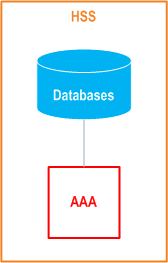Content for TS 23.228 Word version: 19.1.0
1…
3…
4…
4.2.4…
4.3…
4.4…
4.13…
4.16…
5…
5.2…
5.3…
5.4…
5.4.7…
5.4.8…
5.4a…
5.5…
5.5.3…
5.6…
5.6.3…
5.7…
5.7.3…
5.7.5…
5.7.8…
5.8…
5.10…
5.11…
5.11.3…
5.11.3.3
5.11.3.4
5.11.4…
5.11.5…
5.11.5.3…
5.11.6…
5.12…
5.16…
5.16.2…
5.19…
5.20…
A…
E…
E.2.2…
G…
G.5…
H
I…
J…
K…
L…
M…
M.3…
N…
P…
Q…
Q.2.5…
R…
S…
T…
U…
U.2…
V…
W…
X…
Y…
Z…
AA…
AA.3…
AB…
AC…
AC.7…
AC.7.2…
AC.7.2.2
AC.7.2.3…
AC.7.4…
AC.7.9…
AC.7.9.3…
AC.7.10…
AC.7.10.4.2…
AC.9…
AC.10…
AC.11…
AD…
AE…
AF…
AG…
L Aspects for use of Common IMS in 3GPP2 systems
L.1 General
L.2 Definitions
L.2.1 HSS
L.3 Mobility related concepts when using 3GPP2 Packet Data Subsystem
L.3.1 General
L.3.2 Procedures for P-CSCF discovery
L.4 QoS related concepts when using 3GPP2 Packet Data Subsystem
L.5 IP version support in IMS when using 3GPP2 Packet Data Subsystem
L.6 Address and identity management concepts
L.6.1 Deriving IMS identifiers
L.7 Relationship to 3GPP Generic User Profile (GUP)
...
...
L (Normative) Aspects for use of Common IMS in 3GPP2 systems |R8| p. 264
L.1 General p. 264
This clause describes the main concepts that are used when providing IMS services using 3GPP2 IP-CAN as defined in 3GPP2 X.S0011 [60] or using 3GPP2 radio access with CDMA 1X as defined in 3GPP2 C.S0001-D [61] and/or HRPD as defined in 3GPP2 C.S0024-A [62] and/or UMB as defined in 3GPP2 C.S0084-000 [63] radio access.
L.2 Definitions p. 264
L.2.1 HSS p. 264
For 3GPP2 systems, the term "HSS" is used to represent the Home AAA entity plus the Databases to which it interfaces. The HSS in 3GPP2 systems does not include the HLR functionality. Figure L.1 shows the HSS in 3GPP2 systems.

L.3 Mobility related concepts when using 3GPP2 Packet Data Subsystem p. 264
L.3.1 General p. 264
The Mobility related procedures for 3GPP2 systems are described in 3GPP2 X.S0011 [60] and the IP address management principles are described in 3GPP2 X.S0011 [60]. As specified by these procedures, the UE acquires the necessary IP address(es) to access IM CN system.
The restriction on using a single IP address for IMS Local Breakout functionality as defined in clause 5.1.0 does not apply to 3GPP2 based systems.
L.3.2 Procedures for P-CSCF discovery p. 265
This clause describes the P-CSCF discovery procedures applicable for 3GPP2 systems. These procedures follow the generic mechanisms described in clause 5.1.1 with the following exception:
- Discovery of P-CSCF as part of establishment of connectivity towards the 3GPP2 IP-CAN is not supported.
L.4 QoS related concepts when using 3GPP2 Packet Data Subsystem p. 265
The QoS procedures follow the generic requirements described in clause 4.2.5 with the following modification to bullet 6.e in clause 4.2.5:
- The initiation of any required end-to-end QoS signalling, negotiation and resource allocation processes at different network segments may take place before or after the initiation and delivery of a session set-up request.
L.5 IP version support in IMS when using 3GPP2 Packet Data Subsystem p. 265
The UE shall support IPv4 only or both IPv4 and IPv6.
L.6 Address and identity management concepts p. 265
L.6.1 Deriving IMS identifiers p. 265
ISIM is the primary source for IMS identity information. If an ISIM is not present, the UE shall use the IMS credentials stored in the IMC to access IMS.
If no IMS credentials are stored in the IMC, then temporary credentials shall be derived as follows:
- a Temporary Private User Identity shall be derived from the Mobile Station ID (IMSI, MIN or IRM), which allows for uniquely identifying the user within the operator's network;
- a Temporary Public User Identity shall be derived from the MSID, and shall be used in SIP registration procedures. The Temporary Public User Identity shall take the form of a SIP URI (as defined in RFC 3261 and RFC 3986).
- A Temporary Public User Identity shall not be displayed to the user and shall not be used for public usage such as displaying on a business card.
- The Temporary Public User Identity shall only be used during the SIP initial registration, re-registration and mobile initiated de-registration procedures.
- The implicitly registered Public User Identities shall be used for session handling, in non-registration SIP messages and may be used at subsequent SIP registration procedures.
- A Temporary Public User Identity shall only be available to the CSCF and HSS nodes.
L.7 Relationship to 3GPP Generic User Profile (GUP) p. 266
3GPP GUP is not applicable to 3GPP2 systems.